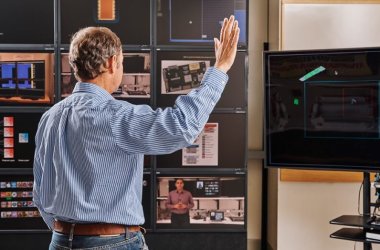 The need to improve the energy efficiency of buildings and the reliability of utilities has created a multi-billion dollar market opportunity for IBM, along with new job opportunities for IT professionals, executives say.
The need to improve the energy efficiency of buildings and the reliability of utilities has created a multi-billion dollar market opportunity for IBM, along with new job opportunities for IT professionals, executives say.
IBM is developing systems that can turn vast amounts of data collected by sensors, GPS and RFID systems in buildings and infrastructure systems into information that can be acted on to save energy and improve efficiency. The new systems are part of an environmentally-focused IBM business line aimed at a potential mega-market.
The enterprise vendor has positioned its initiatives under its broad “Smarter Planet” label, a prominent theme at the IBM Pulse conference here this week. Although the name and its Earth-logo in particular, may hint at climate change activism, it’s all business to Steve Mills, senior vice president and group executive of IBM Software and Systems.
“We didn’t start this out with the idea of establishing some sort of environmental beachhead, but rather a recognition that you can use technology in very creative ways to make physical world systems more efficient and effective and in doing so you may have a positive environmental impact,” said Mills in an interview at the conference.
“We’re about serving our shareholders, and you have to make these things economically viable from a business perspective,” he added.
Such an approach is increasingly leading to a merging of physical and IT systems, along with a need for IT professionals with the skills to marry them.
“There is just an explosion of data coming in,” said George Hawkins, the general manager of the District of Columbia Water and Sewer Authority.
Hawkins, who wears a blue workman’s jacket, has a resume that includes a summa cum laude graduation from Princeton and a Harvard Law School diploma. He is passionate about technology and what it can enable to improve delivery of essential services.
Under Hawkins, the Washington city agency has installed smart metering systems, and deployed sensors along parts of its distribution system.
The water authority now has about 30 to 50 job openings for engineers and IT professionals. The latter group, Hawkins said, includes openings for people “who can help us parse through what data is the most important and then connect it with actual boots on the ground.”
In 2004, Carnegie Mellon University has created a graduate program on advanced infrastructure systems, one of the few in the country. It now has about 50 students, said James Garrett, a professor of civil and environmental engineering at the university.
The students in the program are civil engineers, but the program includes research activity that requires collaboration with the school’s computer science and electrical engineering department.
Garrett said that today, only a small number of buildings are “smart,” meaning they can be operated at a much higher level of quality, comfort and cost.
Smart buildings hinge on collecting data from an array of systems, and then acting on that data. “If we aren’t able to do anything about that data, to turn it into actionable useful information,” said Garratt, “it’s not smarter in my mind.
This need to analyse and structure a large amount of data collected from an ever-growing array of devises, is IBM’s sweet spot, said Mills.
The market related to smart buildings and infrastructure is hard to measure, said Mills. “For the kinds of products that we produce, it represents many, many billions of dollars in annual opportunity,” he added.





